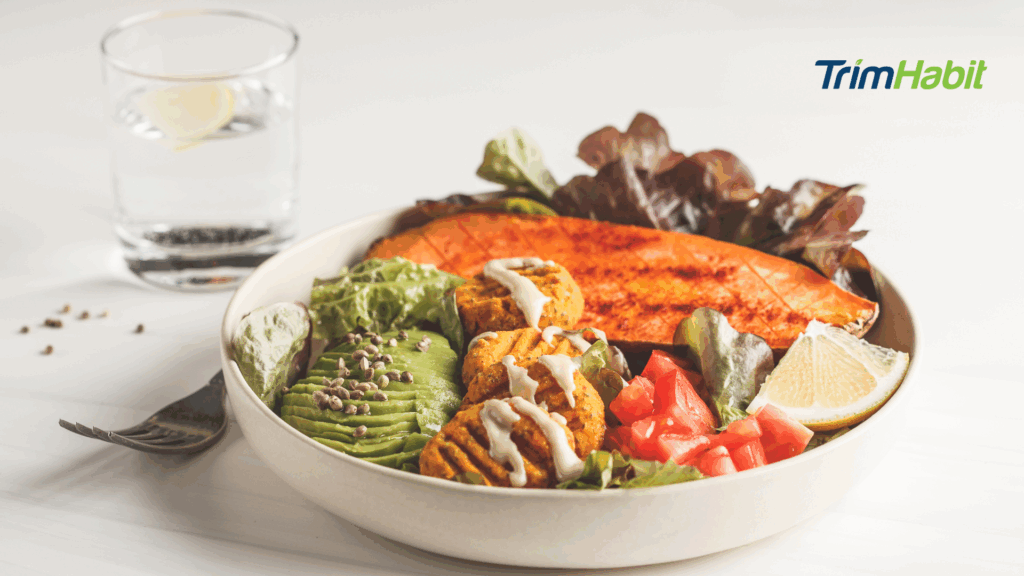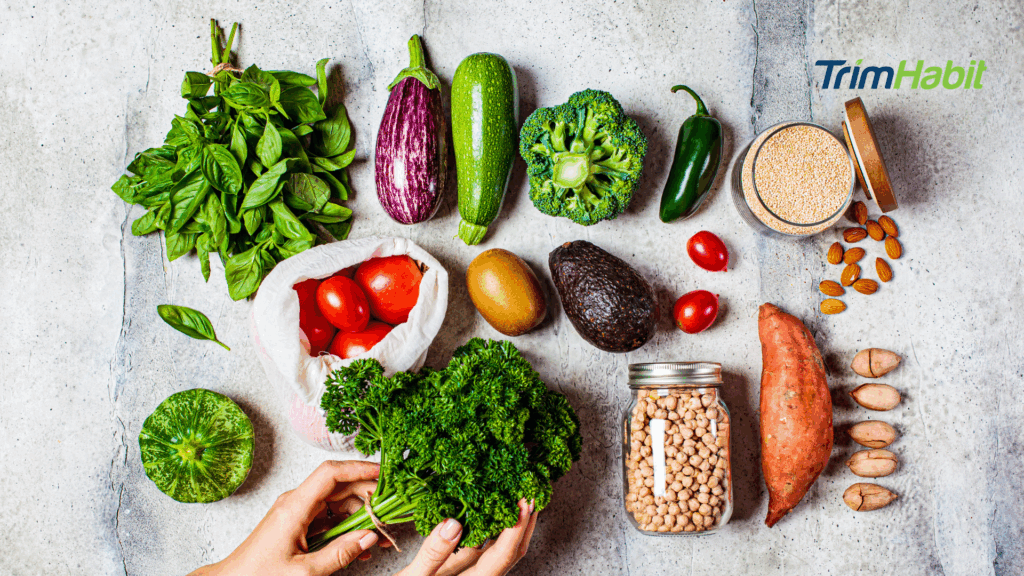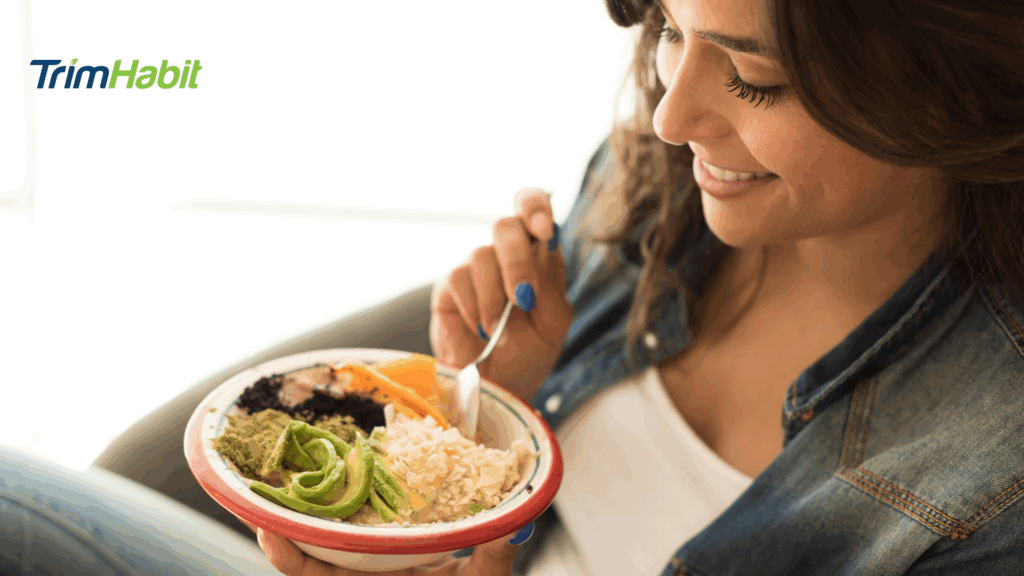Intermittent fasting has become a popular approach to health and wellness, praised for its potential to improve metabolism, aid weight management, and promote better health. However, to maximize the benefits of this eating pattern, the quality of your meals matters as much as the timing. That’s where superfoods come into play.
This article explores how to incorporate superfoods into your intermittent fasting meals. Whether breaking your fast with nutrient-dense meals or preparing for a fasting window with sustaining options, these tips will show you how to make every bite count.
Understanding Superfoods
“Superfoods” are nutrient-rich foods considered especially beneficial for health and well-being. While there isn’t an official scientific definition for superfoods, they are typically high in vitamins, minerals, antioxidants, fiber, healthy fats, or phytochemicals that promote health1.
Characteristics Of Superfoods
Superfoods can contribute to:
- Improved Immunity: Antioxidants such as vitamin C, E, and beta-carotene fight free radicals, supporting the immune system2.
- Heart Health: Foods rich in omega-3 fatty acids, such as fatty fish and nuts, promote cardiovascular health3.
- Healthy Digestion: Fiber-rich options, such as chia seeds and oats, aid digestion and regulate blood sugar levels4.
- Reduced Inflammation: Certain superfoods contain anti-inflammatory compounds, like turmeric and ginger5.
Examples of Popular Superfoods
- Berries (e.g., blueberries, acai berries, goji berries)
- Rich in antioxidants, fiber, and vitamins.
- May boost brain health and combat aging.
- Leafy Greens (e.g., kale, spinach)
- High in vitamins K, C, and A, calcium, and fiber.
- Supports bone health and digestion.
- Nuts and Seeds (e.g., almonds, walnuts, chia seeds, flaxseeds)
- Source of healthy fats, fiber, and protein.
- Good for heart health and brain function.
- Fatty Fish (e.g., salmon, mackerel, sardines)
- High in omega-3 fatty acids or essential amino acids.
- Supports heart and brain health.
- Whole Grains (e.g., quinoa, oats, brown rice)
- Packed with fiber, B vitamins, and minerals.
- Helps maintain stable energy levels.
- Fermented Foods (e.g., yogurt, kefir, kimchi)
- Probiotics enhance gut health.
- May support immunity and digestion.
- Turmeric
- Contains curcumin, a potent anti-inflammatory compound.
- Linked to reduced risk of chronic diseases.
- Green Tea
- Loaded with catechins, a type of antioxidant.
- May improve brain function and metabolism.
Considerations When Eating Superfoods
- Balance Matters: Eating a variety of nutrient-dense foods is essential. A “superfood” can’t replace an overall balanced diet.
- Portion Control: Even highly nutritious foods can lead to excess calorie intake if consumed large amounts.
- Watch Out for Claims: “Superfood” is often used as a marketing term; not all claims are backed by robust scientific research.
Understanding Intermittent Fasting
Intermittent fasting is an eating pattern where periods of eating alternate with periods of not eating (fasting).
When fasting, the body depletes glucose stores and starts using fat for energy, a process called metabolic switching. Prolonged fasting also triggers autophagy, where cells repair and remove damaged components6.
Popular Methods of Intermittent Fasting
- 16/8 Method: Fast for 16 hours; eat during an 8-hour window (e.g., 12:00 pm-8:00 pm).
- 5:2 Method: Eat 5 days a week and consume a very low-calorie diet (500-600 calories) on the other two non-consecutive days.
- Alternate-Day Fasting: Alternate between regular eating and fasting days (complete fasting or reduced calorie intake).
- Eat-Stop-Eat: Involves 24-hour fasts once or twice a week.
- Warrior Diet: Eat small amounts of raw fruits and vegetables during the day and a large meal in a 4-hour window at night.
- Time-Restricted Eating: Similar to the 16/8 method, but timing can vary (e.g., 14/10, 18/6).
Potential Benefits of Intermittent Fasting
- Weight Loss and Fat Loss: Encourages a calorie deficit and increases fat-burning mechanisms7.
- Improved Insulin Sensitivity: Helps stabilize blood sugar levels8.
- Heart Health: May lower cholesterol, triglycerides, and inflammation9.
- Brain Function: Supports the release of brain-derived neurotrophic factor (BDNF), which may protect against age-related cognitive decline10.
- Enhanced Longevity: Fasting has been observed in animal studies to potentially slow aging and enhance markers associated with longevity11.
- Autophagy: Promotes cellular repair, potentially reducing the risk of chronic diseases12.
Considerations and Risks
- Hunger and Fatigue: Fasting can cause low energy and hunger pangs, especially in the beginning stages.
- Disordered Eating: Those with a history of eating disorders should be cautious.
- Individual Differences: People with medical conditions (e.g., diabetes) or pregnant/breastfeeding individuals should consult a healthcare provider.
- Overeating During Eating Windows: May negate fasting benefits if caloric intake is too high.
Benefits Of Combining Superfoods With Intermittent Fasting
Combining superfoods with intermittent fasting can amplify the numerous health benefits of both approaches. Incorporating nutrient-dense foods into eating windows during intermittent fasting ensures the body gets the essential nutrients needed to thrive, repair, and maintain energy levels.
Key Benefits of Combining Superfoods with Intermittent Fasting
1. Enhanced Nutrient Intake
Superfoods pack high levels of vitamins, minerals, antioxidants, and other bioactive compounds. During the shorter eating window of intermittent fasting, superfoods maximize the nutritional value of each meal.
Example: Pairing kale, blueberries, and chia seeds in a smoothie during your first meal can deliver antioxidants, fiber, and omega-3s essential for cellular repair and digestion.
2. Improved Metabolism and Fat Loss
Superfoods like green tea, ginger, and cayenne pepper may boost metabolism, complementing intermittent fasting by enhancing fat-burning during fasting periods.
Example: Drinking green tea during your fast can support fat oxidation while staying hydrated.
3. Optimized Digestive Health
Superfoods rich in fiber and prebiotics, such as oats, flaxseeds, and fermented foods, aid digestion. This is especially useful during intermittent fasting, as a healthier gut helps maximize nutrient absorption.
Example: Including kefir or sauerkraut in meals can support gut bacteria and ease digestion after long fasting periods.
4. Reduced Inflammation
Both intermittent fasting and anti-inflammatory superfoods (like turmeric black coffee, walnuts, and dark leafy greens) reduce chronic inflammation linked to aging and various diseases.
Example: Break your fast with a turmeric-laced lentil soup for a comforting, anti-inflammatory meal.
5. Sustained Energy Levels
Superfoods like quinoa, avocados, and sweet potatoes provide slow-digesting carbs and healthy fats, helping stabilize energy during eating windows.
Example: A quinoa salad with avocado and almonds fuels sustained energy levels without spiking blood sugar.
6. Enhanced Brain Health
Superfoods such as salmon, blueberries, and dark chocolate support brain health by improving memory, focus, and neuroplasticity. Combined with intermittent fasting’s effects on brain-derived neurotrophic factor (BDNF), they boost cognitive performance.
Example: Start your eating window with grilled salmon and spinach salad to nourish your brain and body.
7. Better Satiety During Eating Windows
Superfoods high in fiber, protein, and healthy fats, such as chia seeds and nuts, promote fullness. This helps prevent overeating, a common challenge during intermittent fasting.
Example: Chia pudding topped with walnuts and berries offers a filling, nutrient-rich snack during your eating period.
How To Incorporate Superfoods Into Your Intermittent Fasting Meals
Incorporating superfoods into your intermittent fasting meals is about maximizing nutrient density to ensure that your body gets essential vitamins, minerals, and antioxidants within a limited eating window. Here’s a guide on how to do this effectively:
General Strategies
- Plan Balanced Meals: To maximize each meal, focus on combining protein, fiber, healthy fats, and complex carbs. Superfoods can serve as key components of every category.
- Prioritize Nutrient Density: Since eating windows are shorter, choose nutrient-dense superfoods like leafy greens, fatty fish, and nuts to avoid nutrient deficiencies.
- Break the Fast Wisely: Your first meal sets the tone for energy and digestion. Use easily digestible superfoods that provide a balance of macronutrients and hydration.
- Time Nutrient-Specific Superfoods: Tailor certain foods to specific benefits—for example, protein-rich superfoods after workouts or hydrating foods to combat fatigue.
- Stay Hydrated During Fasting Periods: Incorporate drinks like green tea, infused water with lemon or ginger, or matcha to hydrate and benefit from antioxidants during the fast.
Meal Ideas to Incorporate Superfoods
Breaking Your Fast (First Meal)
Choose foods that are easy to digest in the stomach, provide quick energy, and restore beneficial nutrients.
- Superfood Options: Avocado, eggs, berries, oatmeal, chia seeds, yogurt.
- Example Meal: Chia seed pudding made with almond milk, topped with fresh blueberries, banana slices, and a drizzle of honey.
Lunch (Midday Meal)
Include protein, fiber, and healthy fats to sustain daily energy.
- Superfood Options: Salmon, spinach, quinoa, sweet potatoes, olive oil.
- Example Meal: Quinoa salad with spinach, grilled salmon, cherry tomatoes, avocado, and a lemon-turmeric dressing.
Snacks During Eating Window
Choose nutrient-dense, quick-to-prepare snacks to fill gaps between meals.
- Superfood Options: Nuts, seeds, hummus, Greek yogurt, dark chocolate.
- Example Snack: A handful of almonds with a square of dark chocolate (70% or higher cacao).
Dinner (Closing Your Eating Window)
Focus on lean protein, fiber, and anti-inflammatory superfoods to aid recovery and prepare for fasting.
- Superfood Options: Kale, lentils, broccoli, olive oil, turmeric.
- Example Meal: Baked chicken with roasted sweet potatoes, steamed broccoli, and kale sautéed in olive oil with garlic.
Planning Superfood-Rich Meals During Your Eating Window
Creating meals packed with nutrients and superfoods during your eating window in intermittent fasting ensures maximum nutrient intake while enhancing energy, satiety, and health. Here’s how to structure your meals with these powerhouse ingredients:
Meal Planning Tips
- Aim for Balance: Include a mix of macronutrients—protein, healthy fats, complex carbs—and superfoods rich in vitamins and antioxidants.
- Use a Colorful Plate: Brightly colored fruits and cruciferous vegetables provide a variety of phytonutrients.
- Plan Ahead: To save time, prep superfood ingredients (like washing greens, cooking quinoa, or slicing fruit).
- Portion Smartly: While superfoods are nutrient-dense, portion control prevents excess calorie consumption.
- Adapt to Your Goals: Tailor meals based on your fasting purpose—whether to lose weight, energy boost, or improve digestion.
Common Mistakes To Avoid
Incorporating superfoods with intermittent fasting is beneficial, but mistakes can reduce effectiveness or cause unintended health problems or setbacks. Here’s a list of common mistakes to avoid and tips to stay on track:
Overeating During the Eating Window
- Mistake: Thinking you can eat unlimited amounts during the eating period to compensate for fasting.
- Why It’s a Problem: Overeating can negate caloric deficits, disrupt digestion, and spike blood sugar levels.
- Solution: Practice mindful eating and include filling superfoods like avocados, quinoa, and nuts in your meals to stay satiated.
Neglecting Nutritional Balance
- Mistake: Relying too heavily on one type of superfood (e.g., only eating berries or seeds) instead of diversifying your diet.
- Why It’s a Problem: Overloading a single nutrient may leave gaps in others, such as protein or essential fats.
- Solution: Pair superfoods with lean protein, healthy fats, and fiber for balanced meals. Include a variety like spinach, salmon, walnuts, and turmeric.
Breaking the Fast with Processed Foods
- Mistake: Eating highly processed or sugary foods (e.g., donuts, chips) to “reward” yourself after fasting.
- Why It’s a Problem: Processed foods can spike blood sugar and cause crashes, undermining energy levels.
- Solution: Break the fast with nutrient-dense options such as a smoothie with spinach, chia seeds, and berries or a quinoa salad with vegetables and lean protein.
Not Staying Hydrated
- Mistake: Forgetting to drink enough water or relying solely on caffeinated drinks like coffee during fasting.
- Why It’s a Problem: Dehydration can lead to fatigue, hunger pangs, and poor digestion.
- Solution: Drink plenty of water throughout the day and include hydrating superfoods like cucumbers, watermelon, and green tea.
Ignoring Individual Needs and Goals
- Mistake: Following generic fasting schedules or superfood trends without considering personal health goals or conditions.
- Why It’s a Problem: This could lead to nutrient deficiencies or difficulty maintaining consistency.
- Solution: Adapt your approach to your lifestyle, health needs, and goals. For example, fermented superfoods like kimchi or kefir can be added to improve gut health.
Overloading on Superfoods
- Mistake: Consuming excessive amounts of certain superfoods, like chia seeds, nuts, or dark chocolate, thinking more is always better.
- Why It’s a Problem: Overeating even healthy foods can lead to excessive calorie intake or digestive discomfort.
- Solution: Stick to recommended portions, such as a tablespoon of chia seeds or a small handful of almonds.
Ignoring the Quality of Superfoods
- Mistake: Choosing highly processed or artificially enhanced “superfood” products.
- Why It’s a Problem: These often contain added sugars or preservatives that diminish health benefits.
- Solution: Opt for whole, minimally processed options (e.g., fresh berries instead of sugary berry-flavored snacks).
Skipping Meals or Under-Eating
- Mistake: Eating too little during the eating window in an attempt to accelerate weight loss.
- Why It’s a Problem: This can lead to fatigue, nutrient deficiencies, and difficulty sticking to intermittent fasting long-term.
- Solution: Ensure each meal is nutrient-dense and satisfies your energy needs. Use superfoods like quinoa, sweet potatoes, and avocados for slow-releasing energy.
Rushing into Intermittent Fasting
- Mistake: Starting a strict fasting regimen without prior preparation or understanding.
- Why It’s a Problem: This may cause burnout, excessive hunger, or nutrient deficiencies.
- Solution: Ease into intermittent fasting gradually (e.g., start with a 12-hour fast before progressing to 16/8) and plan balanced meals.
Not Prioritizing Sleep and Recovery
- Mistake: Relying solely on diet while neglecting other lifestyle factors like sleep, stress management, or exercise.
- Why It’s a Problem: Poor sleep or high stress can hinder metabolism and disrupt hormonal balance.
- Solution: Pair your fasting and superfood routine with adequate sleep, stress reduction, and regular physical activity.
Summary
Incorporating superfoods into intermittent fasting can enhance its benefits by maximizing nutrition during eating windows.
Superfoods like berries, leafy greens, nuts, and fatty fish provide essential nutrients, antioxidants, and energy. Break your fast with easily digestible, nutrient-rich options such as chia pudding, smoothies, or avocado toast.
Combine protein, healthy fats, and complex carbs for balanced meals with ingredients like quinoa, salmon, and spinach. Nutrient-dense snacks, such as nuts or yogurt, help maintain satiety.
Tailor choices to your goals, using fermented foods for digestion, turmeric for inflammation, or fatty fish for brain health. These additions can enhance your intermittent fasting routine and promote better health.









